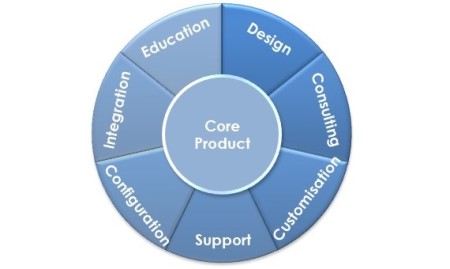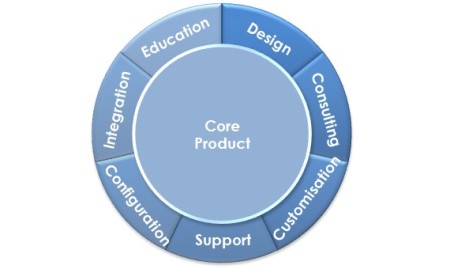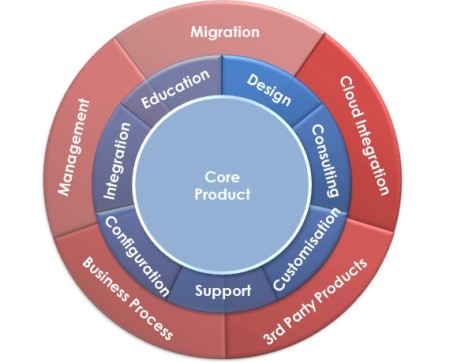It’s interesting that a marketing concept introduced 30 years ago can have implications for an IT industry transitioning to an “as a Service” model today, but that is exactly what is happening.
In 1986, Regis McKenna presented the concept of the Whole Product in his book “The Regis Touch”, which was later popularised by Geoffrey Moore in “Crossing the Chasm”.
If we use this whole product concept, to look at the shift from traditional “Product and Services” models to newer Cloud models, it becomes clear that partners who don’t adapt their Services business are likely to experience declining profitability.
The Whole Product
For those not familiar with this concept, the principle is based on the fact that vendors produce what is effectively a “Core” or “generic” product. This core product is then augmented by additional elements, creating the Whole product, in order to deliver the customer experience.
For example, if a Server is the core product, then the whole product would include software applications, configuration and integration services, education, peripheral devices, internet connection, support, etc, to make the core product more useful.

These augmented elements are what the channel delivers. In other words, the bigger the product gap between the core product and the whole product, the more there is for partners to do.
The Whole Product and the Cloud
Now when we look at this model from the perspective that the core product is a Cloud offering, we can see that the many of the augmented elements are already included. For example, if we look at (say) “Disaster Recovery as a Service”, many of the augmented elements (eg. storage, network, integration, etc) that would normally be provided by partners are already part of the core product.
In effect, the core product has expanded to become closer to the whole product.

The ramifications for business partners are of course that there are less services to provide to augment the core product, and therefore the profitability from selling this product is diminished.
The “new” Whole Product
However, the positive aspect is that the customer experience now also has a new dimension. The introduction of Cloud brings with it a revised customer expectation. Which means there is a new “whole product” circle that extends beyond the original sphere, encompassing new elements such as Migration, Business Process Reengineering, Cloud Integration etc

3 Strategies for Success
The result is that there is still a gap that needs to be filled by the channel; it’s just that now it comprises of different elements than previously. Which means that partners who can learn new skills and adapt to delivering these new services will uncover new revenue streams. Partners who don’t change however, will find their profitability decreasing.
So what can partners do to address this change?
- Reduce your cost structure – use tools or productise to automate your existing processes to reduce the amount of repetitive customised activity.
- Expand your services – develop new capabilities within your organisation to meet the new customer requirements, or beef up your sales activities.
- Partner with other companies – build alliances with other organisations who can help deliver services where you have a deficiency.
In the end, vendors can’t do everything that every customer wants, so there will always be a gap between what the vendor makes and what the customer needs. That gap is filled by the channel. The difference now is that gap is changing. Are you changing with it?


